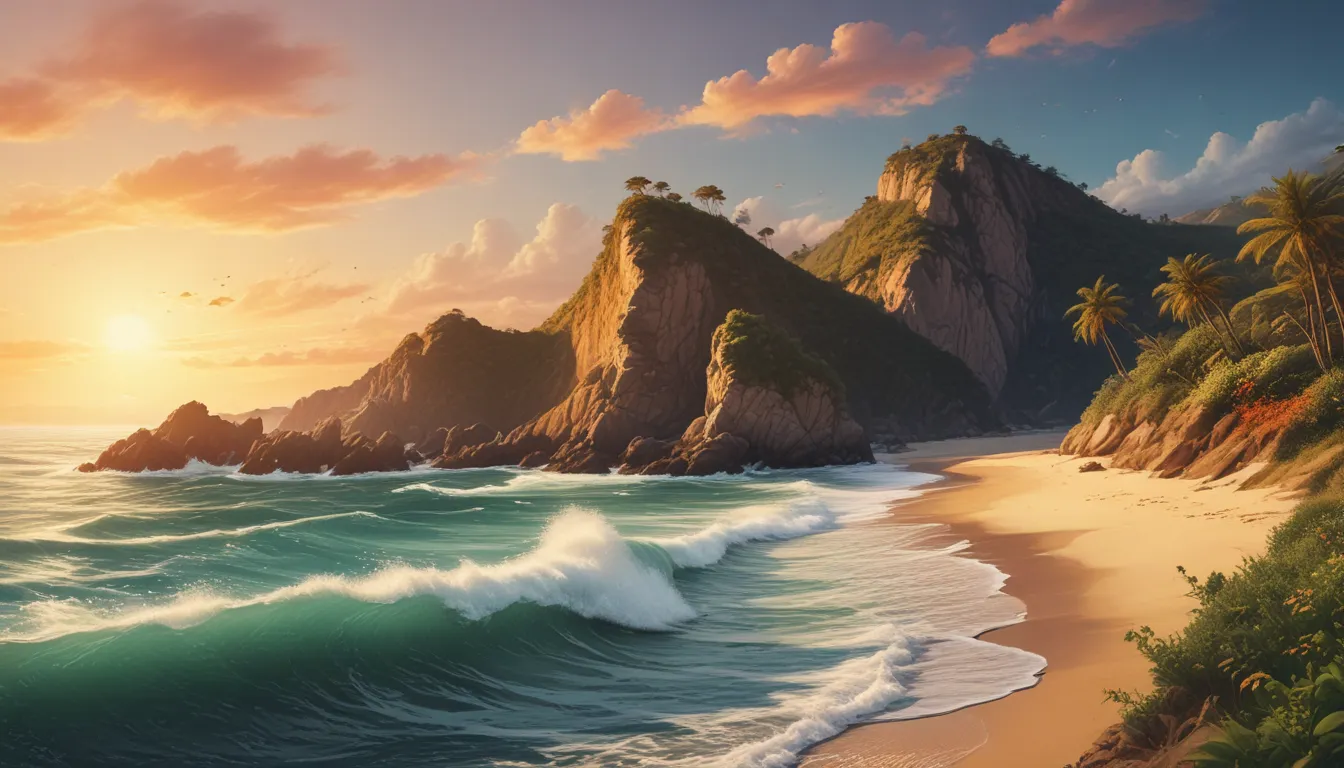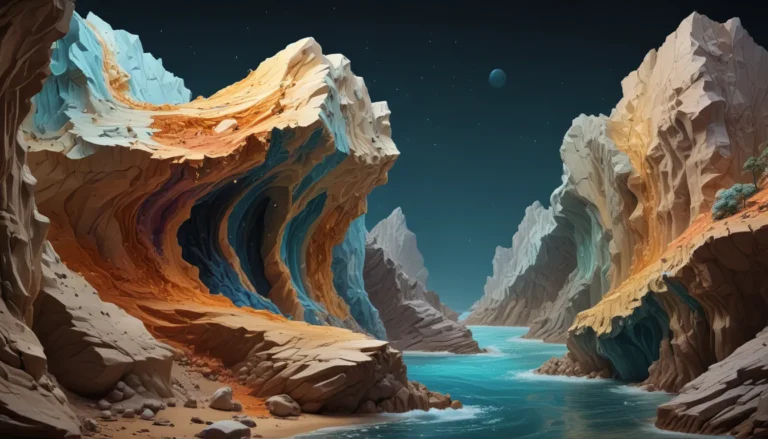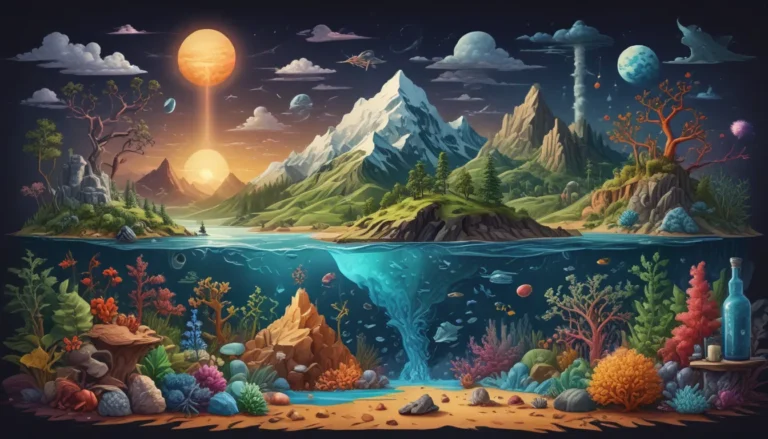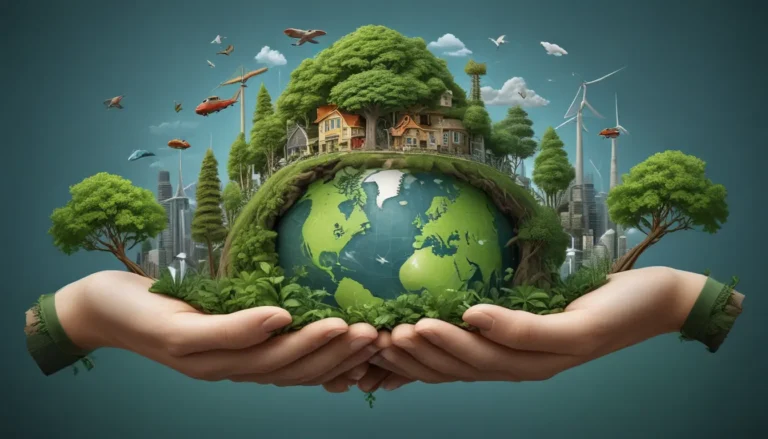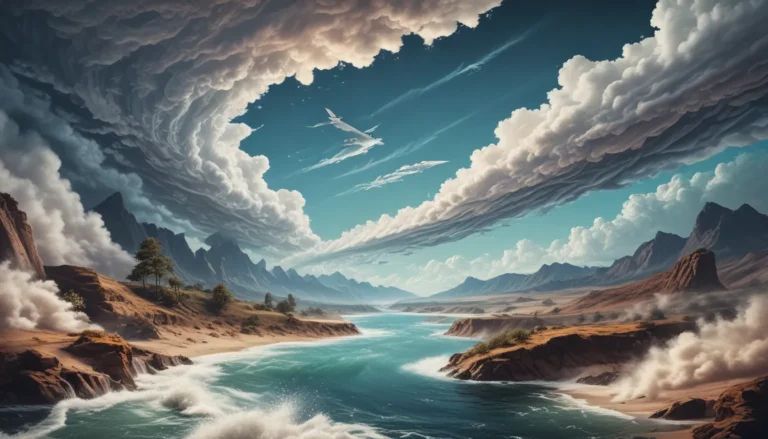A Note About Images: The images used in our articles are for illustration purposes only and may not exactly match the content. They are meant to engage readers, but the text should be relied upon for accurate information.
When we think of the natural wonders of our planet, coastlines may not always be the first to come to mind. However, these stunning strips of land where the land meets the sea hold a plethora of secrets and marvels waiting to be uncovered. From their dynamic nature to the diverse ecosystems they support, coastlines are not only beautiful but also essential to the health of our planet.
In this article, we will delve into the fascinating world of coastlines and unveil some unbelievable facts that will leave you in awe. From the ever-changing landscapes to the valuable natural resources they provide, coastlines are truly extraordinary features that deserve our admiration and protection.
So, let’s embark on a journey to discover the mysteries and marvels of coastlines that will deepen our appreciation for the incredible beauty of our planet.
Coastlines: Nature’s Ever-Changing Canvas
Coastlines are in a constant state of flux, shaped by the relentless forces of tides, winds, and waves. This dynamic nature means that no coastline is ever the same, making each one a unique and captivating subject for study and exploration. From sandy beaches to rugged cliffs, the diversity of coastal landscapes is a testament to the power of nature’s artistry.
A Haven for Diverse Ecosystems
Within the coastal zones, a rich tapestry of ecosystems thrives, from mangrove forests to coral reefs teeming with life. These diverse habitats provide a sanctuary for countless plant and animal species, making coastlines biodiversity hotspots that play a crucial role in sustaining life on Earth.
Guardians of the Inland
One of the vital functions of coastlines is their role as protectors of inland areas. Features such as dunes, cliffs, and barrier islands act as natural barriers, shielding the land from the pounding waves and ferocious storms of the sea. By absorbing the impact of these forces, coastlines help mitigate the risk of flooding and erosion, safeguarding the delicate balance of coastal ecosystems.
Abundant Natural Resources
Coastlines are veritable treasure troves of valuable resources, from seafood and minerals to oil and gas reserves. These coastal zones are key contributors to economic activities and global trade, providing essential resources that drive prosperity and development.
The Influences of Nature and Man
The formation of coastlines is a complex interplay of geological processes, climatic conditions, ocean currents, and human activities. These diverse influences shape the unique landforms found along coastlines, from sheltered bays to estuaries carved by rivers merging with the sea.
Facing the Challenges of Climate Change
Despite their resilience, coastlines are under increasing threat from the impacts of climate change. Rising sea levels, intensifying storms, and coastal erosion are just some of the consequences of global warming that pose significant risks to both natural ecosystems and human communities along the coast.
A Magnet for Visitors
The allure of coastlines is undeniable, drawing millions of visitors each year to bask in the sun, ride the waves, and explore the wonders of the marine world. Whether it’s a leisurely stroll on the beach or an exhilarating surf session, coastlines offer endless opportunities for recreation and rejuvenation.
Traces of History and Culture
Throughout the annals of time, coastlines have been hubs of human civilization and cultural exchange. From ancient ruins to iconic landmarks, these coastal regions bear the imprints of our collective heritage, offering a glimpse into the rich tapestry of human history.
Preserving the Coastal Legacy
As guardians of these precious ecosystems, it is our collective responsibility to protect and preserve coastlines for future generations. By promoting sustainable practices, reducing pollution, and supporting conservation efforts, we can ensure that the beauty and biodiversity of coastlines endure for years to come.
The Inspirational Power of Coastlines
The allure of coastlines has long been a source of inspiration for artists, writers, and poets. The dramatic seascapes, ever-changing tides, and vibrant marine life provide endless creative fodder for those seeking to capture the essence of these mesmerizing landscapes.
As we reflect on the wonders of coastlines, we are reminded of the incredible beauty and significance of these natural features. From their dynamic nature to their intrinsic value as habitats and resources, coastlines embody the harmony and diversity of the natural world.
In Conclusion
Coastlines are not just geographical features; they are living, breathing entities that shape our planet’s landscapes and sustain life in myriad forms. By immersing ourselves in the wonders of coastlines, we gain a deeper appreciation for the intricate relationships between land and sea, and the delicate balance that sustains these fragile ecosystems.
As we strive to protect and preserve coastlines for future generations, let us cherish the beauty and bounty they provide, and honor the profound impact they have on our lives and the health of our planet.
FAQs
-
What is a coastline?
A coastline is the juncture where land meets the sea, encompassing various features such as cliffs, beaches, estuaries, and bays. -
How long is the world’s longest coastline?
Canada boasts the world’s longest coastline, stretching over an impressive 202,080 kilometers (125,567 miles), including both the mainland and numerous islands. -
What causes coastal erosion?
Coastal erosion is primarily driven by natural forces such as waves, tides, and currents that gradually wear away the land along the coast. -
What is a barrier island?
A barrier island is a long, narrow strip of land composed of sand that parallels the coastline and is separated from the mainland by a lagoon or shallow body of water. -
How do coastlines contribute to biodiversity?
Coastlines provide a diverse range of habitats, including shallow waters, intertidal zones, sandy beaches, and rocky shores, supporting a rich array of marine life, birds, and coastal organisms. -
Can humans impact coastlines?
Human activities such as coastal development, pollution, and climate change can disrupt the natural balance of coastal ecosystems and pose threats to marine life and habitats. -
What are some famous coastlines around the world?
Notable coastlines include the Great Barrier Reef in Australia, the Amalfi Coast in Italy, the California Coastline in the United States, and the Cliffs of Moher in Ireland, each offering unique beauty and attractions. -
Are all coastlines sandy beaches?
No, coastlines can vary widely in their features, ranging from sandy beaches to rocky shores, cliffs, mangrove forests, and other geological formations based on the region’s composition and environment. -
How can I help protect coastlines?
You can contribute to coastal conservation efforts by practicing responsible tourism, reducing plastic waste, supporting local conservation initiatives, and raising awareness about the importance of preserving coastal ecosystems. -
Can coastlines change over time?
Yes, coastlines are constantly evolving due to natural processes such as erosion and deposition, as well as human activities that can alter their shape and features over time.
Coastlines are not just geographic boundaries; they are living, breathing ecosystems that hold a wealth of wonders and wisdom waiting to be explored. By embracing the beauty and complexity of coastlines, we can gain a deeper understanding of our connection to the natural world and the profound impact we have on its health and well-being. Let us continue to marvel at the marvels of coastlines, protect their legacy, and nurture the rich tapestry of life they sustain for generations to come.
